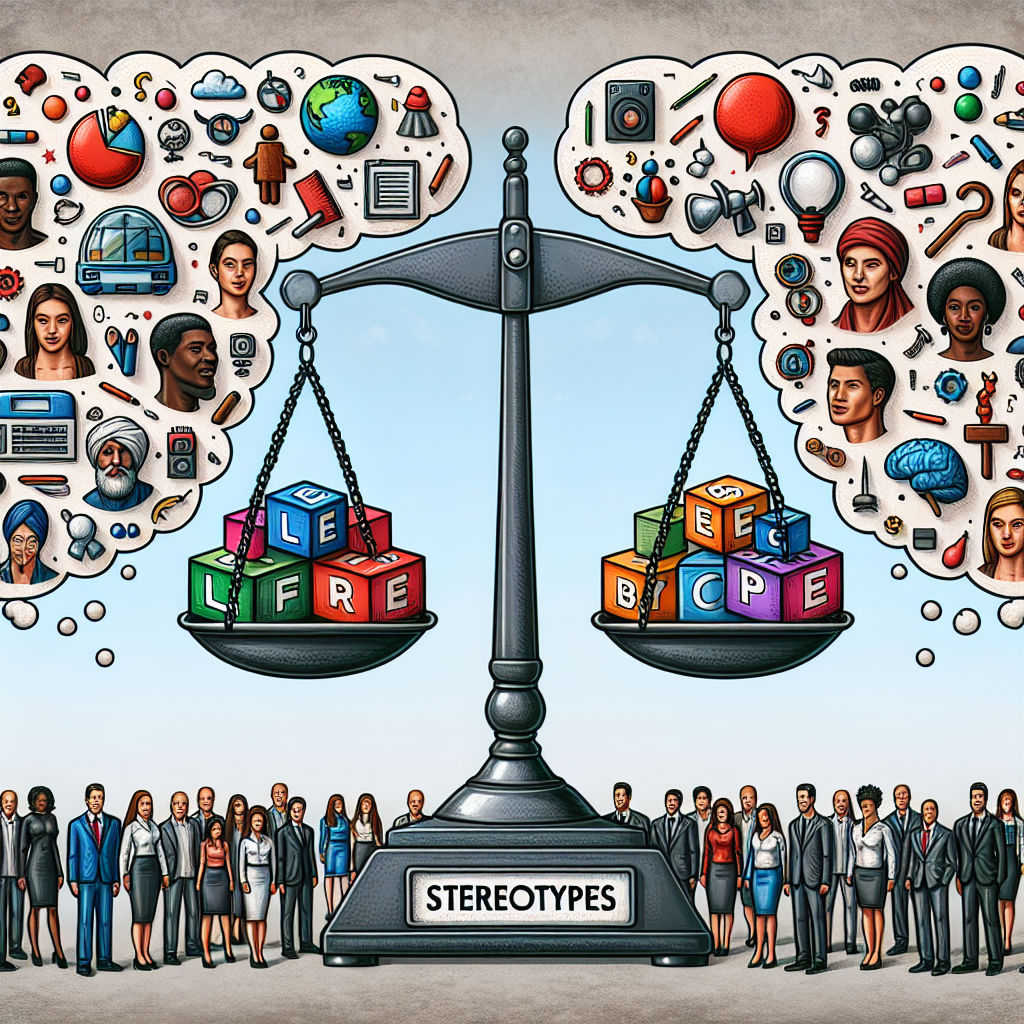Introduction
Have you ever wondered how certain attitudes or biases shape our perceptions of others? The power of stereotypes wields immense influence over our lives and decisions in ways we often fail to recognize. From the workplace to interpersonal relationships, stereotypes can define what we see, how we act, and even how we are treated. As we delve deeper into this riveting topic, it becomes evident that understanding the nuances of stereotypes is not just an academic exercise but a necessary journey toward personal growth and societal betterment.
The Foundation of Stereotypes: Understanding Their Origin
Stereotypes are preconceived notions that categorize individuals based on their appearances, behaviors, or affiliations. They arise from a natural human tendency to simplify and navigate the complexities of social interactions. This instinct can be traced back to survival instincts, where early humans categorized others as allies or threats based on quick assessments.
Case Study: The Roots of Gender Stereotypes
A classic example is the development of gender stereotypes. Historically, women have been stereotyped as caregivers, while men are often seen as providers. This binary view is not merely a societal construct but has worked itself into educational systems. For instance, studies have shown that teachers may subconsciously encourage boys to excel in math and science while promoting girls in arts and humanities. This demonstrates how the power of stereotypes can shape the aspirations and self-images of young students.
| Stereotype | Historical Context | Current Impact |
|---|---|---|
| Women as caregivers | Developed during agrarian societies | Impact on career choices |
| Men as providers | Rooted in patriarchal norms | Affects parenting roles |
Stereotypes and Decision-Making: The Unseen Hand
Stereotypes can greatly influence our decision-making processes. Whether it’s hiring practices in corporate settings or social interactions, the power of stereotypes shapes our judgments—often without us even realizing it.
Case Study: Recruitment Bias in Hiring
A study conducted by the National Bureau of Economic Research found that resumes with "white-sounding" names received 50% more callbacks than identical resumes with "Black-sounding" names. This illustrates the power of stereotypes in the hiring process, where hiring managers’ biases inadvertently affect their decisions. The implications reach far beyond just individual prospects; they impact diversity in workplaces.
Table: Callbacks by Name Ethnicity
| Name Type | Callback Rate (%) |
|---|---|
| White-sounding | 20% |
| Black-sounding | 10% |
The Social Media Lens: Shaping Stereotypes Today
As we step into a digital age, the power of stereotypes has found a new platform: social media. Algorithms and trending feeds can amplify societal stereotypes, perpetuating harmful narratives and affecting public perception.
Case Study: Social Movements and Stereotyping
The Black Lives Matter movement has brought to light the dangers of racial stereotypes. Videos of police confrontations, widely shared across platforms, reveal how bias shapes societal reactions and institutional responses. The societal perception of race plays a significant role in public discourse, influencing everything from political decisions to personal beliefs.
Breaking Down Stereotypes: The Role of Education
Education serves as a powerful tool for dismantling stereotypes. Programs designed to educate individuals about diversity can reshape perceptions and foster a more inclusive society.
Case Study: Diversity Training in Corporations
Companies like Google and Starbucks have implemented diversity training programs to combat workplace stereotypes. These programs have reported positive outcomes in terms of employee satisfaction and team collaboration.
| Company | Training Focus | Outcome |
|---|---|---|
| Implicit bias training | Improved collaboration | |
| Starbucks | Racial diversity awareness | Increased employee retention |
The Double-Edged Sword: Positive Stereotypes
Not all stereotypes are negative; some can be seemingly favorable. For instance, the stereotype that Asians are good at math can push individuals toward academic excellence. However, the power of stereotypes knows no bounds, often creating pressure to conform to these expectations, which may not apply to everyone.
Case Study: The Model Minority Myth
The "model minority" stereotype regarding Asian Americans has had mixed effects. While it may encourage some to strive for success, it can also lead to erasure of the struggles faced by those who do not fit this narrow definition. This misconception perpetuates the power of stereotypes, leading to harmful expectations that ignore individual stories.
Embracing a New Narrative: How to Challenge Stereotypes
Understanding the power of stereotypes is the first step toward breaking free from their confines. Challenging these assumptions requires conscious effort and proactive measures.
Tactical Approaches
- Awareness: Recognize your own biases.
- Education: Engage in conversations that promote diversity.
- Representation: Support media and platforms that reflect a broad range of experiences.
Conclusion: A Call to Action
The power of stereotypes is as real as it is complex. They infiltrate our lives, driving decisions and shaping perceptions. However, by acknowledging their impact, we can begin to dismantle these preconceived notions, fostering a more inclusive world. As you navigate your life and make decisions, strive to challenge your assumptions and embrace the diversity of human experience. A commitment to awareness and understanding can lead us to richer, more meaningful interactions and choices.
FAQs about The Power of Stereotypes: How They Influence Our Lives and Decisions
-
What are stereotypes?
Stereotypes are oversimplified beliefs about a group of people, often leading to inaccurate generalizations. -
How do stereotypes impact our daily decisions?
They can lead to biased decision-making, affecting everything from hiring practices to personal relationships. -
Are all stereotypes negative?
No, some stereotypes can be positive, but they can create pressure to conform and often erase individuality. -
How can we reduce the impact of stereotypes?
By increasing awareness, engaging in education, and promoting diverse representation, individuals can help challenge stereotypes. - What role does media play in perpetuating stereotypes?
Media can amplify stereotypes through representation, influencing public perceptions and societal standards.
By understanding the intricate dynamics of the power of stereotypes, we can take steps toward a more inclusive and equitable society. Remember, awareness precedes change; let’s be the change we wish to see.

